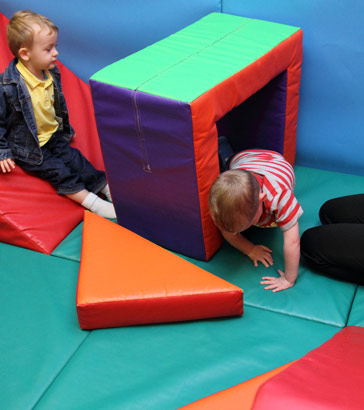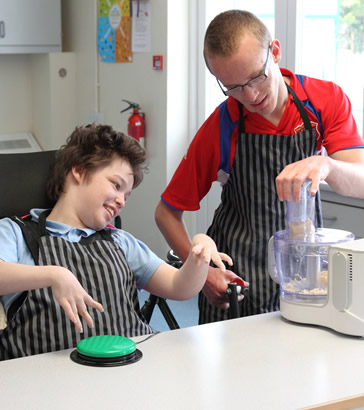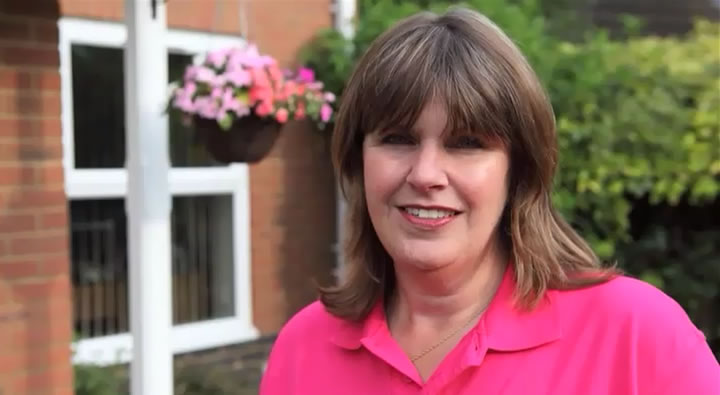Through the Green Paper initiatives, schools have the freedom to create a new approach to working with children and young
people with SEN, one that is based on partnership with families.
Carpenter, 2011
The system needs to be more family friendly so that parents don't feel they have to battle to get the support their child
needs.
Sarah Teather, 2010
Minister for Schools and Families, DfE
Ask yourself what your school currently does for siblings, parents and grandparents.
Parents have told us that good, honest and open communication is one of the important components
of building confidence and good relationships. Face-to-face communication with parents, treating them as equal
partners with expertise in their children's needs, is crucial to establishing and sustaining confidence.
Lamb, 2009
Listen to Jade's mother describing the difficulties she has experienced regarding communication with others.
Case study: Sophia
Watch these two videos of a review meeting for Sophia, a girl on a split placement. Here both mainstream and special school providers reflect on how best to communicate with each other.
-
 Sophia's review 13:38
Sophia's review 13:38 -
 Sophia's review 21:11
Sophia's review 21:11
Consider how you communicate with parents and professionals. Can it be improved?
early intervention

As a baby begins to grow and develop, families watch the changes and are excited about each new development. They are often
the first to notice that their new family member might not be meeting their developmental milestones and are not developing
at the same rate as their siblings or the babies of friends.
Following this they often seek advice and support from primary care professionals such as GPs and health visitors. This can
then result in further referrals to specialist child health services for assessments and investigations.
Issues and concerns
In the first audio clip Emma's mother, Ruth, talks about finding out that Emma had a disability.
In the second audio clip Harvey's father, Simon, looks back to when his twins were born.
-
 Emma's mother2:14
Emma's mother2:14 -
 Harvey's father1:32
Harvey's father1:32
Identify the possible issues and concerns that a family may have when developmental milestones are not reached and advice is sought from primary care professionals.
no diagnosis

The booklet below was developed in collaboration with parents of young children with disabilities, and reflects what they
say it is useful to know. It can be very frustrating when a child is referred backwards and forwards between different specialists
for more tests and there is still no clear answer to the question 'What's happening and why?'
Think of a child you are teaching who you suspect has no current diagnosis. How will you approach the family to discuss this?
Jade has FAS. In this audio clip Jade talks about her interests and music therapy. She also talks about how she feels very unsupported during her school day.
How well does your school support children with SEN? Can it be improved?
Case study: Jade (2)
In these two audio clips Jade's mother, Alison, talks about her concerns about Jade in the early years, Jade's diagnosis of FAS and its implications.
-
 Jade's mother 11:12
Jade's mother 11:12 -
 Jade's mother 21:02
Jade's mother 21:02
For parents to be empowered to take greater control over their support, they need to be clear about their options and understand how decisions are made that affect their child's support.
Support and aspiration, Green Paper, 2011
A family can facilitate a school target, help provide consistency and offer insight into how the child is at home, providing
information on the child's interests and preferences.
Think of a target you are currently teaching a child. Does it relate to the family environment too? How can you break
down the components of the target so that family members have a genuine contribution to make? How will they feedback the outcomes
of their input?

The sibling relationship is often the longest and most enduring relationship of the family, substantially longer than that
of the parent-child relationship.
While the parents are often the primary care-givers in a family, siblings frequently take on secondary roles with varied levels
of responsibility often including care and advocacy, roles which some will maintain into adulthood.
Listen to the four short audio recordings on the next slide which describe siblings' relationships with their brother or sister
with severe and complex learning difficulties.
What are their feelings towards their brother or sister?
What impact has their brother or sister had on their lives – benefits and disadvantages?
For more information on the role of siblings also see the module Talking to Families, Listening to Families.
Siblings (2)
-
 Emma and her sister2:45
Emma and her sister2:45 -
 Marley and Luke 11:02
Marley and Luke 11:02 -
 Marley and Luke 21:10
Marley and Luke 21:10 -
 Harvey and Lydia1:32
Harvey and Lydia1:32

Carpenter, B. (2011) Academies resources
2.0. Partnership with families 9.7. The Schools Network: London.
Trute B. and Hiebert-Murphy D. (2002) Family adjustment to childhood developmental disability: A measure of parent appraisal of family impacts. Journal of Paediatric Psychology 27, (3) 271-280.


